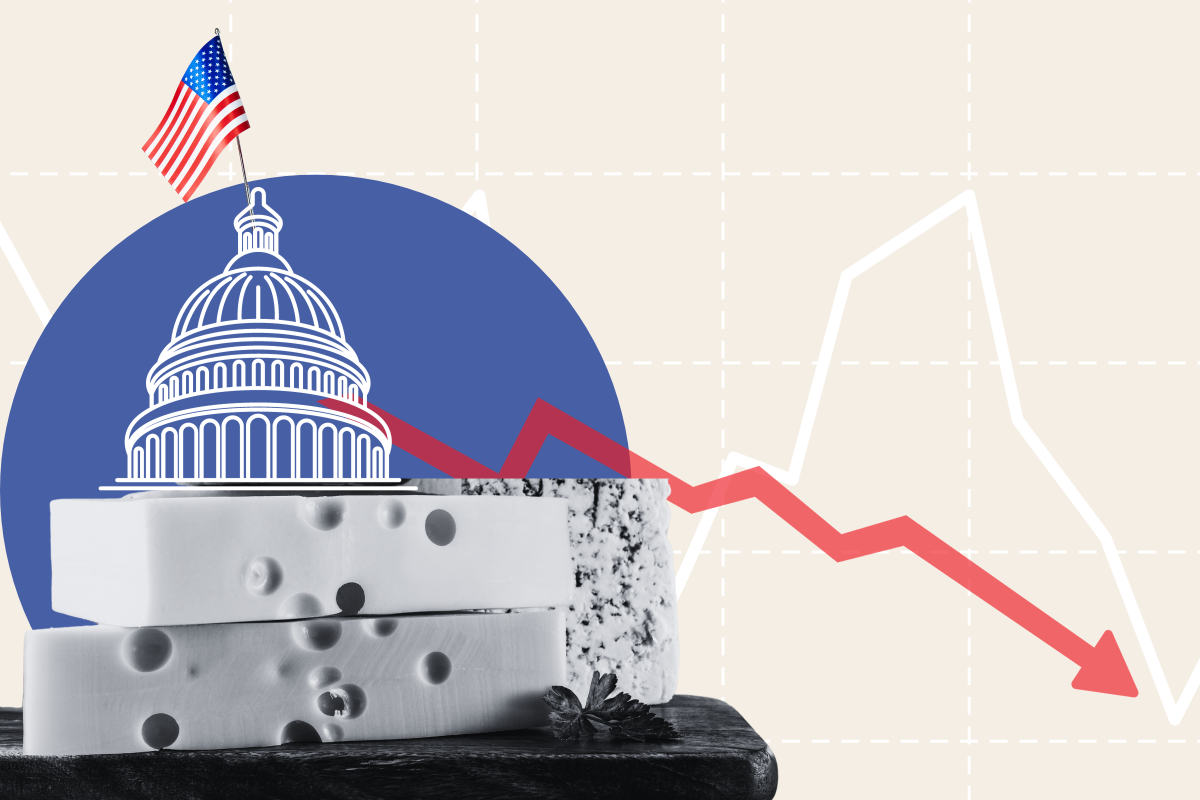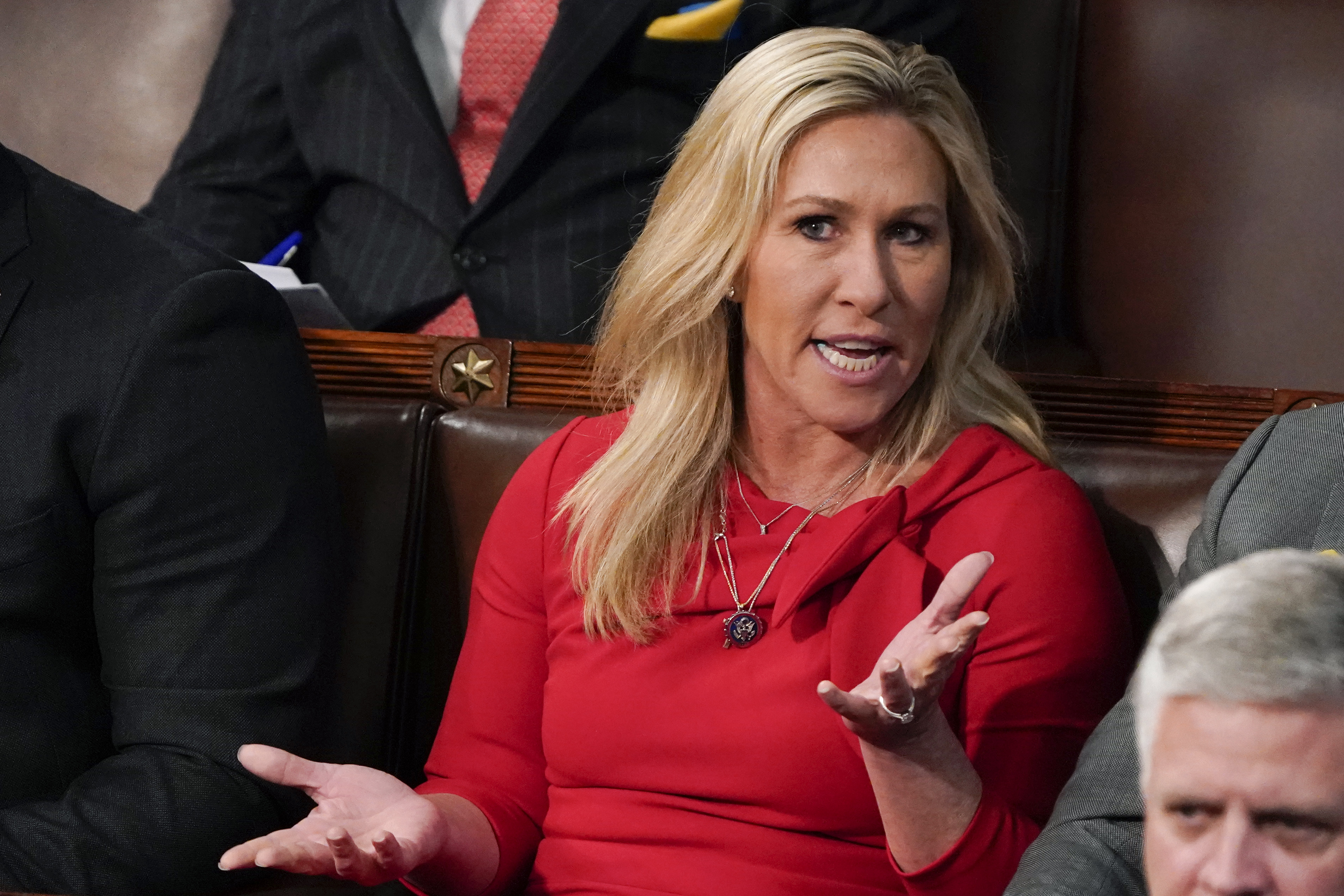The nation's cheese stockpile is dwindling, according to new data published Friday by the U.S. Department of Agriculture (USDA).
The facts about the national cheese stockpile have been disputed. Government estimates within the past year have pointed to a national surplus of between 1.4 billion and 1.5 billion pounds of cheese in cold storage, which is approximately $3.4 billion worth of cheese.
But some argue that the data regarding the stockpile can be misleading because of Americans' collective consumption of cheese when compared to other countries, how much cheese consumption factors into the actual economy and who actually owns the cheese in storage.
The new data shows a total national warehouse stock of approximately 1.433 billion pounds in cold storage as of November 30, down 2 percent from the previous month but up slightly from the previous year.
American cheese makes up the bulk of the cheese in storage, totaling 825,788 pounds. Swiss cheese made up 20,936 pounds, while all other cheeses combined totaled 586,998 pounds.
Newsweek reached out to the USDA via email for comment.

National stockpile data published November 22 showed a total national warehouse stock of approximately 1.458 billion pounds in cold storage as of October 31, down 1 percent from the previous month but up 1 percent from the previous year.
Andrew Novakovic, a professor of agricultural economics at Cornell University, told Newsweek that the U.S. cheese stockpile has grown partly because cheese is harder to get rid of, whereas other dairy products like nonfat dry milk can be sold in foreign markets.
He points out that USDA data refers mostly to commercial stocks, held by either processors or someone else in the supply chain that is not the federal government. The government has programs like food assistance that utilize cheese purchases, and school lunches often contain mozzarella and cheddar.
"[The stockpile] is typically owned by those that make the cheese," Novakovic said. "Sometimes there will be others downstream, a distributor or broker, who will pick it up. Sometimes a buyer, like a Kroger or Pizza Hut, will buy it. But by and large, it's the commercial owners."
He added that bigger cheese stockpiles at the end of the year that extend into the new year are not uncommon. That is because cows have seasonal milk production and tend to produce in the spring, consequently making more cheese.
"It's just normal and sensible that there's gonna be storage that occurs from that peak production season to peak consumption season," he said. "The industry follows that stock, like anyone would follow stocks."
The total natural U.S. cheese holding in cold storage experienced a consistent increase between January and June of this year, when it exceeded 1.51 billion pounds. It has ebbed and flowed since then, though this year has remained steadier compared with the past three years.
The largest stockpile since January 2019 was documented in July 2022 and exceeded 1.521 billion pounds in storage.
In 2022, the average U.S. consumer ate about 41.8 pounds of cheese, according to market research analyst Statista. That translates to a 5-plus pounds, per capita, consumption rate over the past decade.
A visual data representation of the 1.5 billion pound stockpile as of October 2022, which was created by Visual Capitalist, a market and economy publisher, shows the national stockpile as one giant cheese block 76 meters in height.
By comparison, that's about 20 meters taller than the 32.4 million pound Tower of Pisa. It is about 17 meters shorter than the Statue of Liberty, which weighs approximately 450,000 pounds. The Eiffel Tower, at 330 meters, weighs about 22.3 million pounds.
Average U.S. monthly prices per pound for cheese in Wisconsin in April 2022 varied based on type, with processed American cheese at the low end of the spectrum at $2.52 per pound. Blue cheese cost about $3.40 per pound, the highest price compared with American, Swiss, mozzarella, brick, Monterey Jack and cheddar.
While overall U.S. dairy consumption remained flat from 1979 to 2019, daily cheese consumption more than doubled during that time, according to loss-adjusted food availability data published in May 2022 by the USDA. The data for basic commodities available in the food supply is adjusted in terms of food spoilage, plate waste and other losses to better define approximate actual consumption.
Overall U.S. dairy consumption remained roughly the same during this 40-year stretch, at just under 1.5 cup equivalents of dairy products per person, per day. But daily cheese consumption grew to 0.72 cup equivalents per person in 2019, up from 0.34 cup equivalents per person in 1979. Current numbers far exceed those from June 2018, which showed a 6 percent increase over the same time in 2017.
Americans are just consuming more cheese nowadays, Novakovic said, and it is for a variety of reasons.
Not only USDA metrics but also data from sales from grocery stores show "super-consistent showings" in cheese purchases ever since the 1970s, leading to the present time, when cheese sales "have been going through the roof."
"There's no real letup in sight, and in fact our per capita consumption is now typically to the high cheese consumption in European countries that we tend to associate with, like, the French," he said.
Historically, Novakovic said, two factors have catapulted cheese "from being familiar to a dynamo": the evolution of casual dining in fast-food restaurants and general daily consumption—how Americans eat.
Mozzarella is common in pizza, and some kind of cheddar/American cheese combination is ubiquitous in fast-food establishments. People eating out at restaurants or having food delivered has become more commonplace, a lifestyle change in a mobility-focused economy.
Even lower-income families will purchase a lot of cheese because of the cost, nutritional value and its enduring appeal.
"More recently, say the last 10 years or so, we've seen Americans start to get more excited about what we refer to as specialty cheeses or more exotic cheeses like Middle Eastern cheeses, Hispanic cheeses," Novakovic said. "In other words, cheeses that have been common somewhere else and have become more common here.
"Higher-income folks have extended their palates, like putting out cheese at a cocktail party," he said. "Or [people] will put out cheese at big events like Super Bowl parties. It's a newer phenomenon."
Uncommon Knowledge
Newsweek is committed to challenging conventional wisdom and finding connections in the search for common ground.
Newsweek is committed to challenging conventional wisdom and finding connections in the search for common ground.
About the writer
Nick Mordowanec is a Newsweek reporter based in Michigan. His focus is reporting on Ukraine and Russia, along with social ... Read more
To read how Newsweek uses AI as a newsroom tool, Click here.








